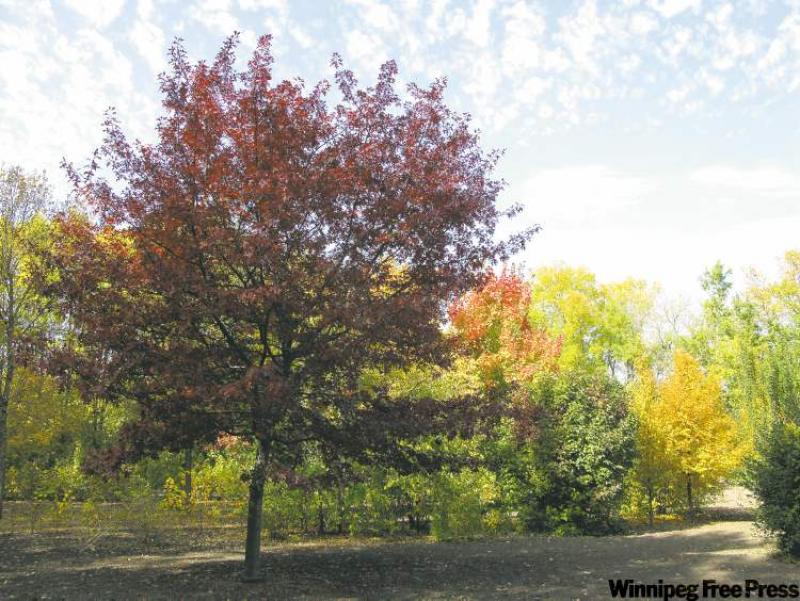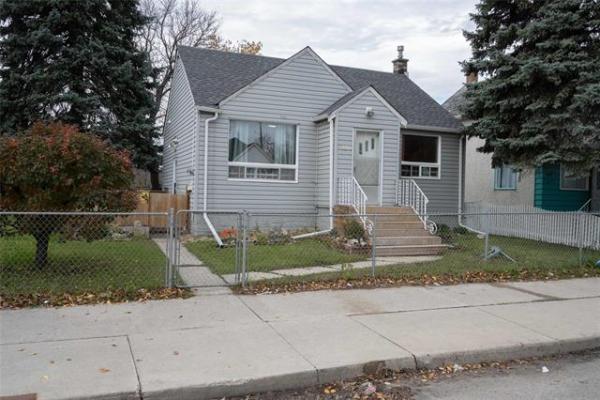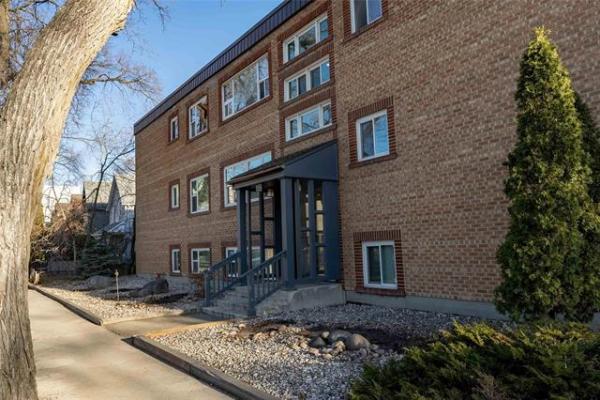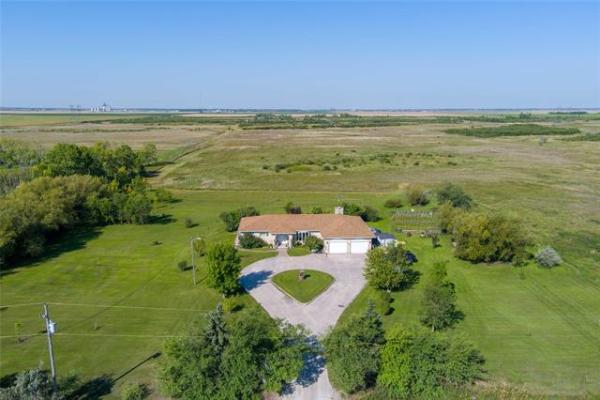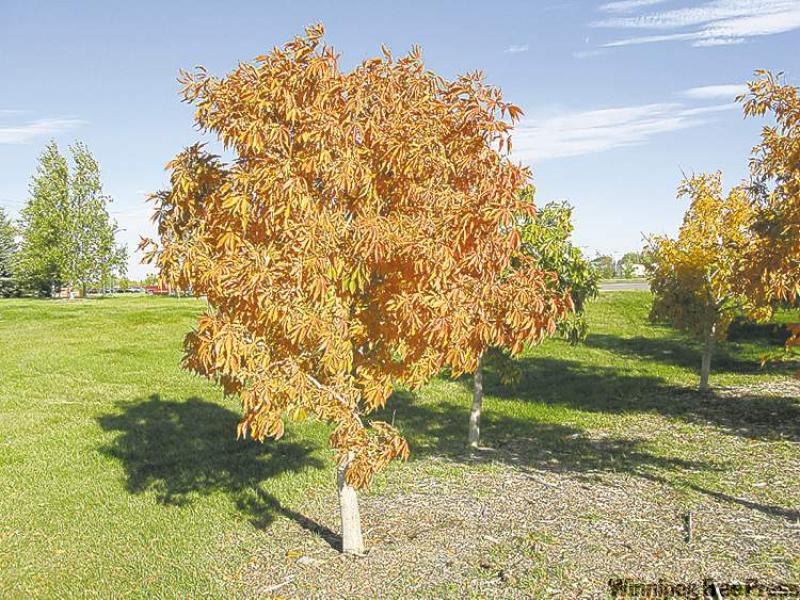
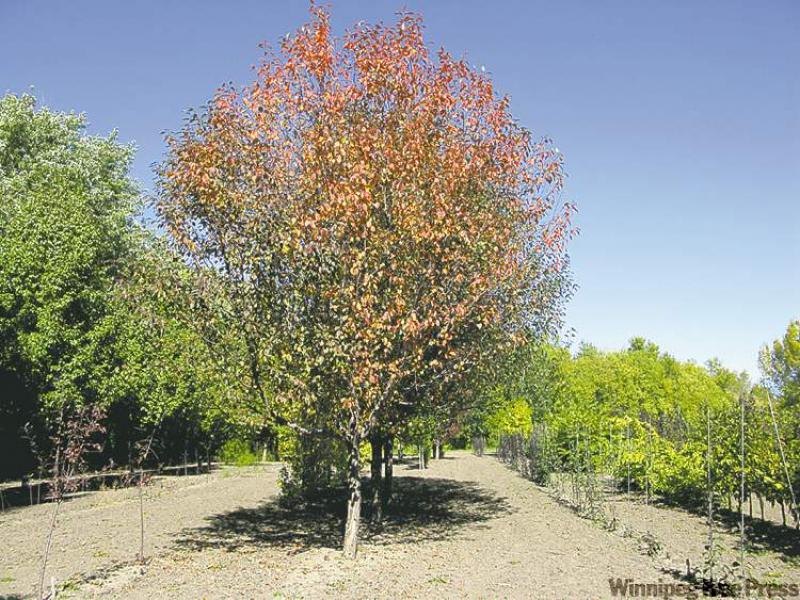
A fascinating experience
I had the unique opportunity to visit the Western Nursery Growers' Group (WNGG) Tree Trial farm this summer at Portage la Prairie. It was a fascinating experience: rows and rows of trees being developed for a variety of characteristics, including improved hardiness and performance, pest and disease resistance, and greater suitability for today's smaller urban properties.
A stunning birch tree with snow-white bark and coppery-rust-coloured branches caught my eye, and I could picture it adorning my front yard. Patience, though, is required, as testing is a lengthy process.
Today's article is written by Rick Durand, project leader of the WNGG tree trials located at six sites across the Canadian Prairie. Rick is also research co-ordinator for the Canadian Nursery Landscape Association, as well as guest editor for the 2012 edition of The Prairie Garden, Western Canada's only gardening annual since 1937.
In November, this popular book will be available at local garden centres as well as McNally Robinson booksellers. Jam-packed with prairie-specific information on trees, it's also the publication's first-ever full-colour edition. Check out the spectacular cover, which shows the colourful leaves of a sugar maple grown in Manitoba.
Colleen.Zacharias@gardensmanitoba.com
The quintessential colours for our Prairie landscape in the fall are blue and gold -- ripening wheat and maturing aspens against a crisp cloudless sky.
Come November, the gold has been replaced by the cool tones of the brown tree silhouettes that transform Winnipeg's streets and parks into a subdued limbo, waiting for that white blanket of contrast.
Why don't we see a lot of red, orange and purple? Location, location, location. Manitoba is in the middle of the continent, far from oceans that moderate temperatures. Winnipeg is one of the coldest large urban centres on Earth and, with that distinction, a lot of tree species prefer to locate farther south.
There are only a handful of trees and shrubs that consistently display red, orange or purple.
Amur Maple (Acer tartaricum var. ginnala) has been providing splashes of orange and red in Manitoba for decades. This small tree or tall shrub originated from the Amur River valley in northeast Russia, where the climate is similar to ours. Ohio Buckeye (Aesculus glabra), a tree native to the Buckeye State, is surprisingly hardy in Manitoba, and the few specimens that grace our province display a gold-orange splish-splash.
The most popular purple-leafed tree for our prairie landscape has been the chokecherry, developed into a number of different cultivated varieties (cultivars) such as Schubert, Midnight, Bailey's Select and Spur Schubert. Lately, though, these chokecherries are disappearing from our gardens and public areas because all of these cultivars are susceptible to black knot of cherry, a bacterial disease that will severely suppress and, in some cases, kill the tree.
So, how hard can it be to develop some trees with great-looking fall colours? Very hard! Tree breeding and development is a long journey, and the two most important ingredients for success are time and patience. To move from one generation to another may take 15 to 30 years, so achieving improvements can be very slow.
In agriculture, a flax breeder can create two generations per year -- one crop growing in California during the winter and one in Manitoba during the summer. There are only a few dedicated individuals working on urban tree development in Canada, and there are no publicly funded institutions on the Canadian Prairies doing this work. However, a consistent source of new trees still originates from tree nurseries where a "sport" or natural mutation is observed and later commercialized.
In the past 10 years there have been some encouraging results in the development of new trees that have great fall colour. Some of the trees with red or orange fall colour are already on the market -- Ventura, Amur Maple, Autumn Blaze Freeman Maple and Unity Sugar Maple.
Starlite flowering crabapple leaves turn yellow in the fall, but the small, shiny red fruit are attractive -- especially to the winter birds that devour them during a frenzied feeding flurry. Courageous flowering crabapple is a seedless cultivar that parades flares of new red growth during the spring and summer seasons and generates a warm orange glow in September.
The new lineup for purple-coloured fall trees are gladiator rosybloom crabapple, Purple Spire rosybloom crabapple and Shooting Star northern pin oak.
You should always consult with the retailer to ensure these trees are best-suited for your planting location.
There are some new and exciting trees with good fall colour that will be introduced to the market in the next few years following a new testing program.
In 2008, the Western Nursery Growers Group (WNGG), an association of tree growers from all four western provinces, established the largest urban tree trial ever in the Canadian Prairie. The WNGG tree trial -- commonly called the Prairie T.R.U.S.T. (testing of rural and urban shade trees) Project -- was established in four major climatic zones: Portage la Prairie in southern Manitoba; Strathmore, Alta., in the chinook zone just east of Calgary; Edmonton in mid-central Alberta; and Saskatoon in the dry zone of Saskatchewan.
More than 150 different trees (five replications of each type of tree) were planted at each site. All the trees are measured and evaluated each year, with results compiled once the trial is completed. The trees will be graded according to their performance and assigned to one of three categories: graduate, collectors item or not recommended.
Trees graded with an average mark of between 90 and 100 per cent will be listed as graduates. These trees will have been tested over a minimum of five winters, or when they have attained a caliper diameter of 80 millimetres (measured at 15 centimetres from ground level).
Full details on the trial are presented on the www.prairietrees.ca website, with the first listing of graduate trees in January. The list of collector and not recommended trees will be added no earlier than January 2013, with updates made every January thereafter.
The future of fall colour in Manitoba is bright indeed. The selection of new trees with impressive fall colour has never been better. Make a statement on your street or in your community by choosing a tree that defines the new look of autumn in Manitoba.

